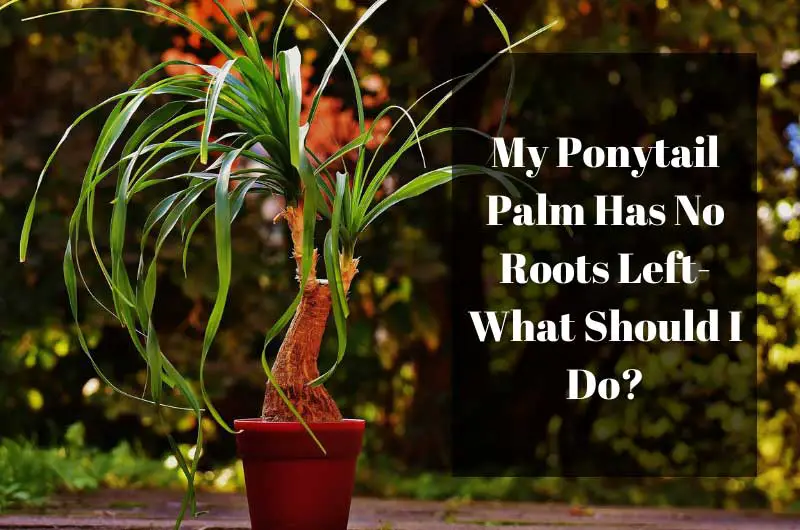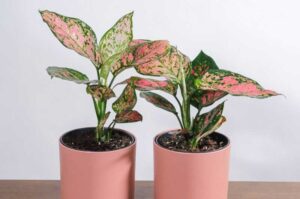My Ponytail Palm Has No Roots Left- What Should I Do?
Ponytail palm trees are fantastic additions to any garden. They add a tropical feel that is hard to find anywhere else. But if you have a palm tree, you also have the challenge of keeping it healthy.
A healthy Ponytail palm tree needs moisture, nutrients, and light. All these factors are essential for the health of your palm tree. It is why some Ponytail palms can experience growth issues when they don’t get enough moisture and nutrients or if they aren’t getting enough light.
And, if these conditions prevail for a longer time, your Ponytail palm tree may start losing its roots and die.
You may wonder what to do if your Ponytail palm has no roots left. Acting fast is essential because a palm without roots is susceptible to disease and pests. So here is what you should do if your Ponytail palm has no roots left.
So, the first step is to check if the plant is still alive or dead. If there are signs of life, then assess the damage. If most of the plant is still healthy, there is a good chance that with some TLC (tender loving care), you can still save it. But if the plant is beyond repair, you may need to say goodbye and replant it with a new one.
So if your Ponytail palm has no roots left, we’ll walk you through saving a dying palm, from assessing the damage to replanting it.
Why Does Your Ponytail Palm Have No Roots Left?
There are a few reasons why your palm tree has no roots. Let’s try to understand them.
One of the most common reasons is that the soil around the base of the palm is not fertile enough. If the soil around your palm tree lacks nutrients, it will lack the resources it needs to grow.
You can improve the soil around your palm tree by adding compost, sand, and mulch around the base of the palm.

Also, some harmful chemicals present in the soil also damage the root. Applying chemical fertilizer directly in contact with the root will negatively impact the root system.
If you have a mature palm tree, you can also try planting a few more trees around it.
Soil issues can also occur if the soil around your palm tree is waterlogged or there is a drainage system blockage. The prolonged waterlogging condition will lead to the rotting of the roots of your Ponytail palm and ultimately there will be no roots left.
Tips For Saving Your Dying Ponytail Palm If It Has No Roots Left
Your Ponytail palm is looking a little sad. The leaves have started turning yellow, and the trunk seems a little bare. It’s an indication that the plant is losing its roots and needs urgent care. You must follow these tips if you notice unusual or retarded growth of palm trees:
Check if the Plant Is Still Alive
Let’s start by checking to see if your plant is still alive. Take a look at the leaves; are they drooping or wilting? If so, that’s usually a sign that the plant is dying.
If the leaves are still green and healthy-looking, then there’s a good chance that your plant will be able to re-root itself. In that case, all you need to do is cut off the top of the plant and place it in some water.
Be sure to change the water regularly, and once new roots start to grow, you can replant your plant in the soil.
Cut Off All the Leaves Close to the Ground
The leaves will turn yellow and brown when a Ponytail palm has no roots left. As the leaves die, they will fall off the stem, leaving a naked stem behind.
Your best bet is to cut off all the leaves close to the ground. This will help reduce moisture loss and make it easier for you to water the plant.
Water the Plant Generously
When a Ponytail palm loses its roots, it’s essential to water it generously. Make sure the potting soil is moist but not soggy, and water the plant until water starts to flow out of the drainage holes at the bottom of the pot.
You may need to water your plant more often during the summer when temperatures are high, and the potting soil dries out quickly. Check the soil daily and keep it moist but not wet.
Apply a Balanced Fertilizer
If your Ponytail palm has no roots left, you can try to replant it. You’ll need to cut off about an inch from the top of the plant and then remove any brown or dead leaves. Next, you’ll want to soak the plant in water for about an hour before planting it in the soil.
Also, it’s a good idea to fertilize your plant with a high-quality palm fertilizer. This will help promote new growth.
But, ensure to use a balanced fertilizer and water it regularly. Within a few weeks, you should start to see new growth.
You can also use organic mulch or compost around the base of your palm tree to improve the soil around it.
Place the Ponytail Palm in a Well-Lit Location
So your Ponytail palm has no roots left? Well, you need to place your palm in a well-lit location. It will help the stem grow new roots.
Ensure the location is out of direct sunlight and not near any heat sources, like radiators or ovens. You’ll also want to keep the soil moist at all times but not wet.
If you take good care of your Ponytail palm, it should grow new roots in no time.
Monitor the Plant for New Growth
Lastly, you must monitor the plant for new growth. Keep an eye on the leaves and look for any new shoots that might be coming up.
If you see any new growth, you’ll need to start watering the plant regularly. Make sure the soil is moist but not wet. Like mentioned above, you might need to fertilize it every few weeks.
But if there’s no sign of new growth, it might be time to say goodbye to your Ponytail palm. So, there you have it! These are just a few tips for taking care of your Ponytail palm. With a bit of love and care, your palm will thrive in no time.
In a nutshell, you can save your dying palm tree by following the steps mentioned below:
- Repot the plant in a new pot using fresh soil.
- Place the plant in a sunny spot and water it regularly.
- Mist the leaves regularly to keep them healthy.
- Prune off any dead or dying leaves.
- Consult a professional if the plant doesn’t seem to be recovering.
Thus, if your palm tree has no roots left, you need to take extra care of it. Make sure it gets enough water, food, and sunlight. Palm trees do well in dry climates but don’t do well in places with too much heat or too little water. You can also protect your palm tree from the sun by installing a shade cloth or building a raised bed.
You may also like
- The Ultimate Guide To Growing Taller Ponytail Palms
- How To Tell If You’re Overwatering Your Ponytail Palm?
- Why Is My Ponytail Palm Trunk Soft, And How To Prevent It?






